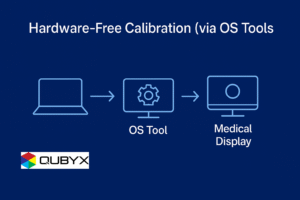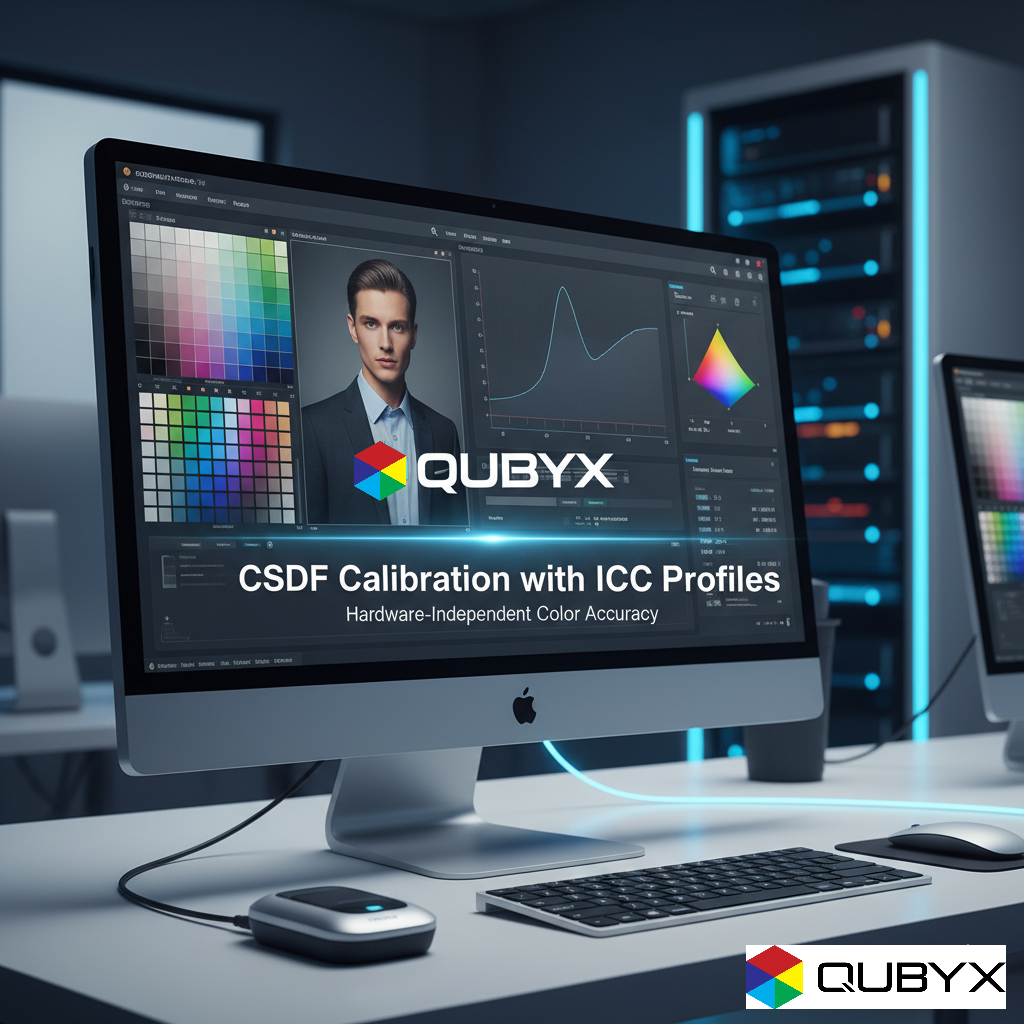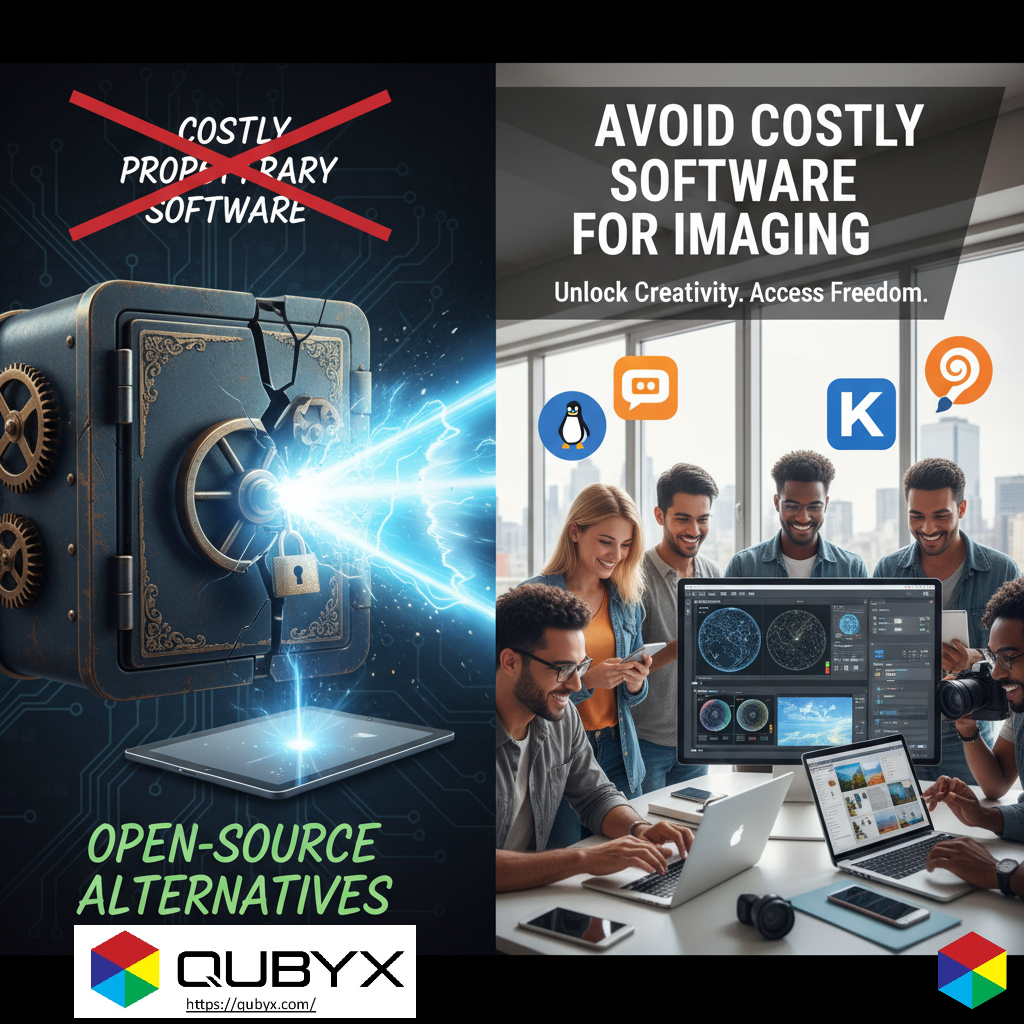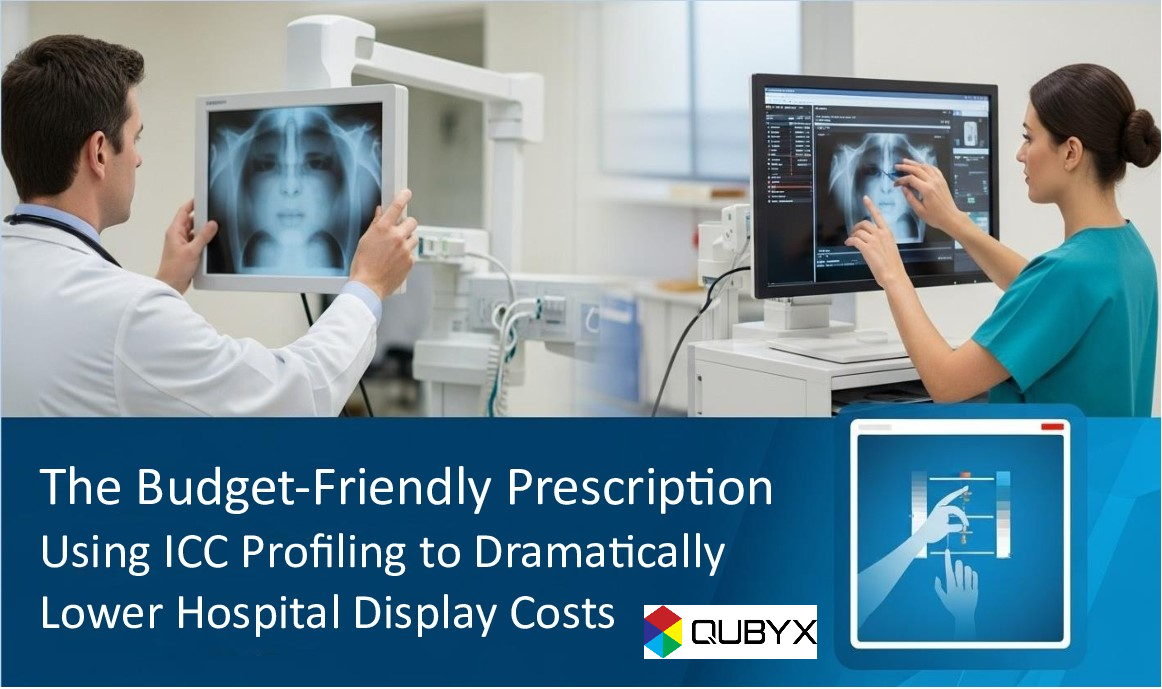News
- Home
- What Is a Medical Display | Role of QUBYX PerfectLum & OS Tools
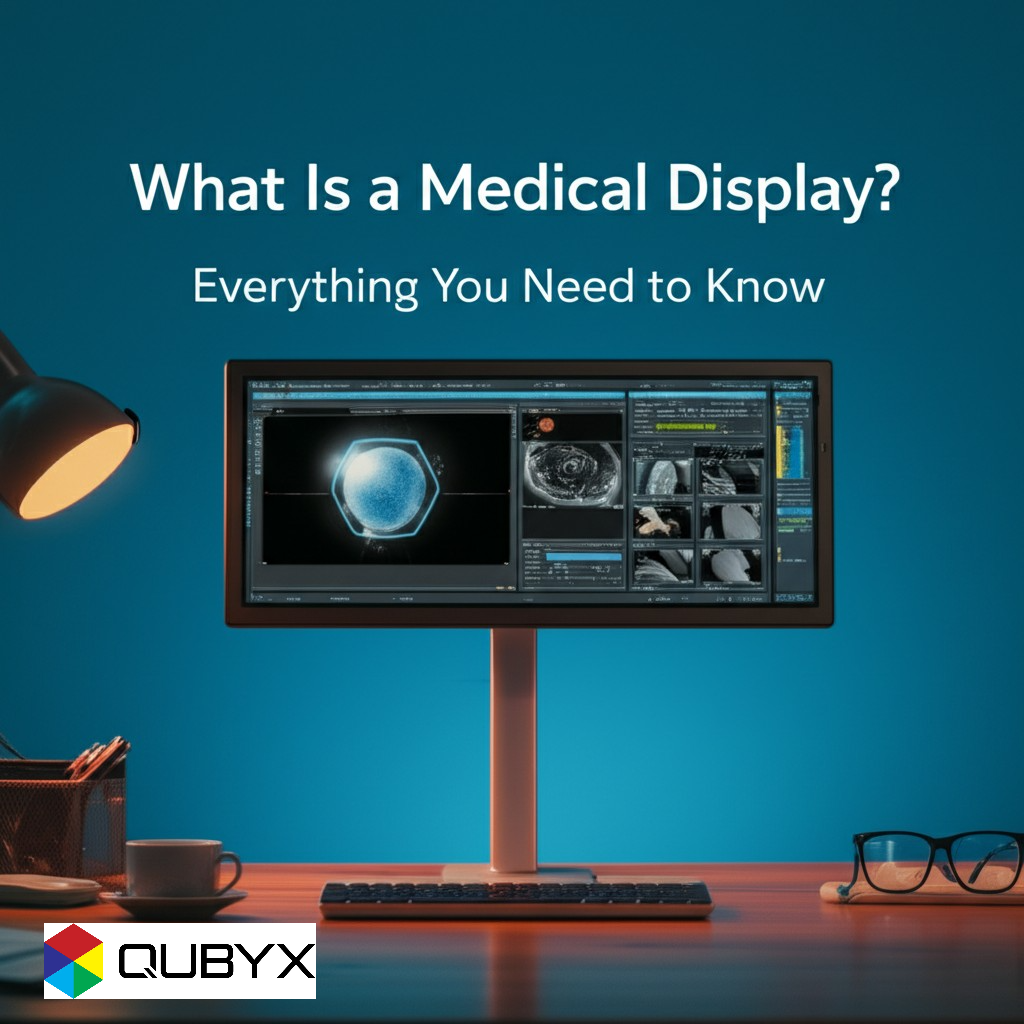



What Is a Medical Display | Role of QUBYX PerfectLum & OS Tools
- October 9, 2025
- Shamsul
What Is a Medical Display? Role of QUBYX PerfectLum & OS Tools
Introduction: When Every Pixel Matters
In the world of modern medicine, image accuracy can mean the difference between early detection and delayed diagnosis. Whether in radiology, mammography, surgery, or teleradiology — healthcare professionals rely on specialized displays to view images with clinical precision.
These displays are known as medical displays — purpose-built monitors engineered to reproduce grayscale and color tones with exceptional accuracy, consistency, and reliability. But having the right hardware isn’t enough. Maintaining diagnostic-grade quality over time requires robust calibration and quality assurance (QA) systems — an area where QUBYX OS Tools and PerfectLum excel.
Understanding What a Medical Display Is
Definition
A medical display (also known as a diagnostic display or clinical monitor) is a high-performance screen designed to visualize medical images — X-rays, MRIs, CT scans, ultrasounds, and more — with fidelity that meets international standards like DICOM Part 14 GSDF, DIN 6868-157, and AAPM TG18/TG270.
These standards ensure that luminance (brightness), grayscale contrast, and color accuracy are aligned with human visual perception, so radiologists can interpret subtle details confidently.
Key Features of Medical Displays
| Feature | Description |
|---|---|
| DICOM GSDF Calibration | Ensures grayscale is mapped according to the human eye’s perception of brightness. |
| High Brightness & Contrast | Provides deep contrast to reveal subtle details in diagnostic images. |
| Uniformity Correction | Guarantees consistent brightness and color across the entire screen surface. |
| Stability Over Time | Compensates for drift due to aging components or temperature variations. |
| Regulatory Compliance | Certified for use in clinical diagnostics (FDA, CE, IEC 62563). |
| Ambient Light Sensors | Adjust display brightness based on room lighting to maintain image accuracy. |
In simple terms: A medical display ensures that what the doctor sees on-screen is exactly what the imaging data represents.
The Importance of Calibration & QA
Even the most advanced display drifts over time. Luminance decreases, color balance shifts, and grayscale tones lose linearity. Without correction, this drift can affect diagnostic accuracy.
That’s why calibration and constancy testing (QA) are required. Calibration adjusts the monitor’s output to match a reference standard (like DICOM GSDF), while QA ensures it stays within tolerance over time.
Typical QA Workflow Diagram (suggested visual)
You can visualize or embed this as a process diagram:
Image Capture → Display Calibration → QA Test → Report Generation → Remote Verification
or as a flowchart:
[Hospital Radiology Workflow]
1️⃣ Image acquisition (CT/MRI/PACS)
2️⃣ Display calibration via PerfectLum
3️⃣ QA constancy checks (daily/weekly)
4️⃣ Centralized reporting via PerfectLum Remote Server
5️⃣ Compliance documentation for audit
The Role of QUBYX in Medical Display Management
Founded in 2002 by Dr. Marc Leppla (PhD, University of Nice Sophia Antipolis, France), QUBYX LLC has become a key innovator in medical imaging calibration software. Its solutions, including PerfectLum and the open-source QUBYX OS Tools, deliver the precision and compliance demanded by diagnostic imaging environments worldwide.
QUBYX OS Tools — The Foundation of Software-Driven Calibration
What Are QUBYX OS Tools?
QUBYX OS Tools is an open-source framework that empowers users to generate ICC device link profiles and 3D LUTs (Look-Up Tables) for precise, hardware-independent calibration.
Key advantages:
-
Hardware-independent approach: Works across brands (AOC, ASUS, Gigabyte, etc.)
-
3D-Linked ICC Profiles: Consolidates all color transforms into a single file
-
Color Accuracy (ΔE < 1): Achieves near-perfect color matching
-
Open-Source Transparency: Developers can audit and modify code under GNU GPL v3
-
Cross-Platform: Supports Windows, macOS, and Linux
By enabling software-first calibration, OS Tools break vendor lock-in, reduce hardware costs, and ensure professional-grade consistency across diverse display ecosystems.
AI Angle: Machine learning algorithms can analyze sensor data and automatically optimize LUT creation — a feature QUBYX is exploring to make calibration predictive rather than reactive.
PerfectLum — The Gold Standard for Medical Display QA
Overview
PerfectLum Suite is QUBYX’s professional calibration and QA software, designed for medical imaging and teleradiology environments where compliance and reliability are paramount.
It ensures that each display in a hospital or clinic:
-
Meets DICOM Part 14 GSDF calibration
-
Passes AAPM TG18, DIN 6868, and NYC PDM tests
-
Undergoes regular constancy checks
-
Is centrally monitored via PerfectLum Remote QA Server
PerfectLum QA Workflow
[Display Detected] → [Run DICOM GSDF Calibration] → [Automated QA Tests] → [Generate Compliance Report] → [Upload to Remote QA Server]
Core Features
| Function | Description |
|---|---|
| Automated Calibration | Adjusts display brightness, contrast, and LUTs to meet DICOM GSDF or sRGB/Rec.709 targets. |
| Compliance Testing | Runs acceptance tests according to TG18, DIN 6868-157/-57, TG270, etc. |
| Remote QA Management | Centralizes QA for multiple displays across hospital networks. |
| Scheduled QA Checks | Automatically verifies constancy (daily, weekly, or monthly). |
| Cross-Platform Support | Runs on Windows 10/11 and macOS, with multiple sensor support. |
| Detailed Reports & Logs | Exports reports in PDF for audits and regulatory compliance. |
How QUBYX Tools Reduce Hospital Costs
Replacing hardware each time a display drifts is wasteful. By leveraging software-first calibration (via PerfectLum + OS Tools), hospitals can:
-
Extend the usable life of existing monitors
-
Maintain compliance without vendor-specific devices
-
Reduce downtime and calibration service costs
-
Improve accuracy across multiple facilities with centralized QA
Hospitals using PerfectLum have reported significant cost savings by replacing expensive OEM calibration packages with QUBYX’s software-based solution while achieving diagnostic-grade precision.
AI + Medical Display Calibration: The Future
AI and machine learning are transforming how calibration data is analyzed.
Future QUBYX updates may include:
-
Predictive Drift Detection: Using AI to anticipate when a monitor will deviate from DICOM standards
-
Automated Recalibration Scheduling: Based on historical drift data
-
Adaptive LUT Optimization: Dynamic tuning for different imaging modalities (e.g., MRI vs. CT)
AI will make calibration smarter, faster, and self-healing, allowing medical facilities to maintain DICOM compliance continuously without manual intervention.
Example QA Workflow Implementation
Hospital Scenario:
A radiology network operates 50 displays from different manufacturers.
Step-by-Step Workflow:
1️⃣ Install PerfectLum Suite on each workstation.
2️⃣ Calibrate each display to DICOM GSDF using a supported sensor.
3️⃣ Enable automated QA checks (e.g., weekly constancy test).
4️⃣ Connect all systems to the PerfectLum Remote QA Server.
5️⃣ IT administrators monitor compliance from a centralized dashboard.
6️⃣ Reports auto-generate for audits or accreditation bodies.
Summary
| Element | Optimized Version |
|---|---|
| Primary Keyword | medical display |
| Secondary Keywords | QUBYX PerfectLum, DICOM calibration, QA software, medical monitor |
| Meta Title | What Is a Medical Display? Role of QUBYX PerfectLum & OS Tools |
| Meta Description | Learn what a medical display is, how calibration ensures diagnostic accuracy, and why QUBYX PerfectLum & OS Tools are vital. |
| Slug | what-is-medical-display-qubyx-perfectlum-os-tools |
| Suggested Hashtags | #MedicalDisplay #Radiology #PerfectLum #QUBYX #DICOM #Teleradiology #HealthcareAI #Calibration |
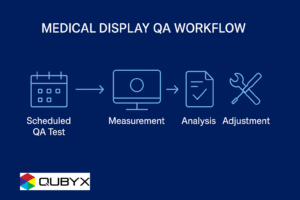
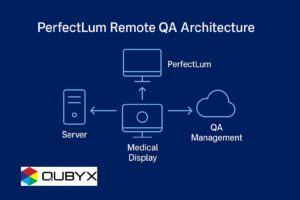
Conclusion: The Future of Diagnostic Displays
As diagnostic imaging continues to evolve, software will define precision.
QUBYX’s approach — blending open-source flexibility (OS Tools) with clinical-grade QA automation (PerfectLum) — ensures that hospitals can maintain world-class display performance without vendor lock-in or hardware dependency.
In short, the future of medical imaging isn’t just brighter — it’s smarter, software-driven, and accessible.
To secure medical-grade display precision while reducing the recurring costs of proprietary hardware, the answer is clear: transition to a software calibration platform like QUBYX OS Tools (Free) and PerfectLum today.
Tags:
medical display, diagnostic monitor, QUBYX PerfectLum, OS Tools, DICOM calibration, medical imaging QA, radiology monitor, display calibration software
Related Posts
- October 9, 2025
- News
What Is a Medical Display? Role of QUBYX PerfectLum &
- October 9, 2025
- News
CSDF Calibration with ICC Profiles | Hardware-Independent Color Accuracy by
- October 8, 2025
- News
Avoid Costly Software for Imaging and Lower Hospital Cost Why

